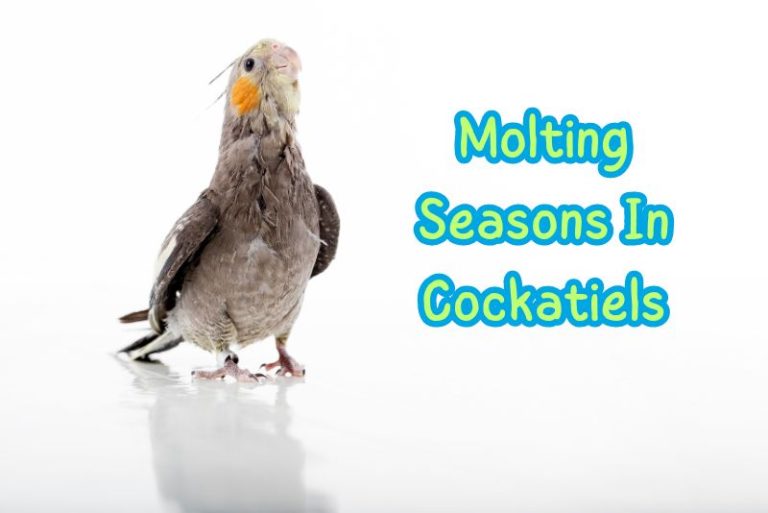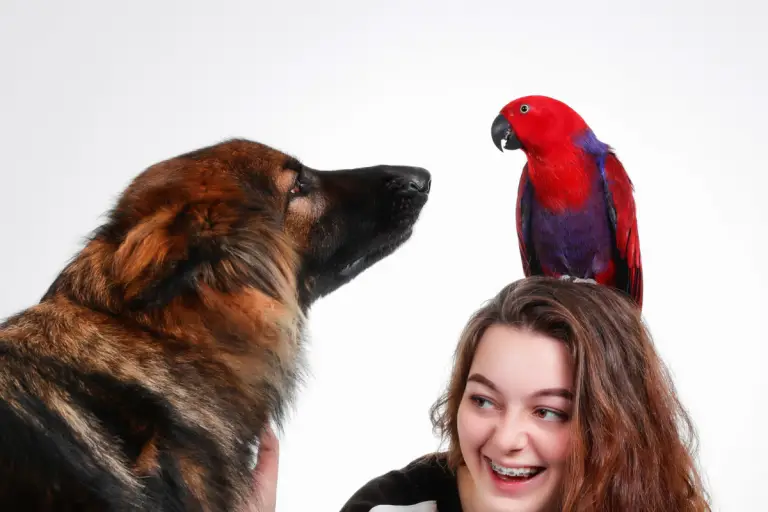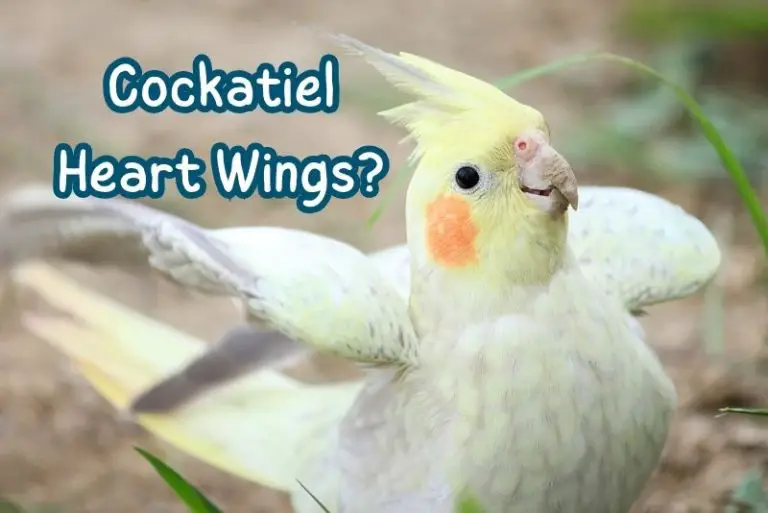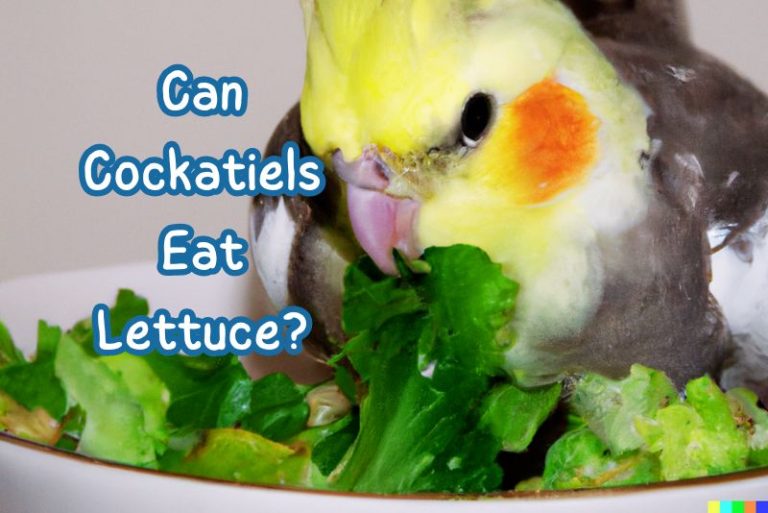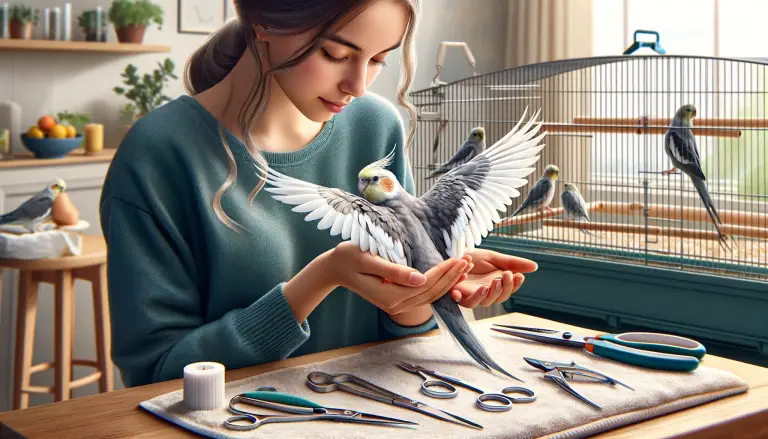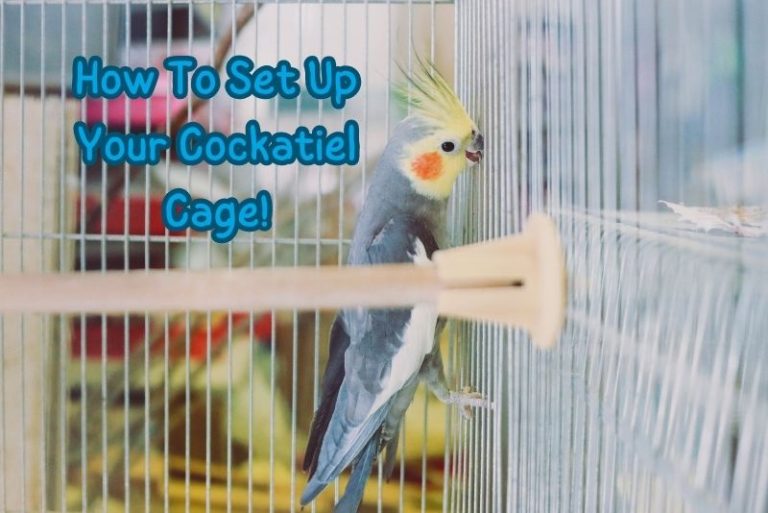I have always loved the unique charm and personality of cockatiels, and I know I’m not alone in this. Many of us who adore these birds often find ourselves wondering about their origins and how they became such cherished companions in our homes.

Today, I am going to teach you about:
- The initial discovery of cockatiels and the natural environment they call home.
- The journey of cockatiels from their native lands to becoming popular pets globally.
- The fascinating development and diversity of cockatiel types over the years.
Let’s talk about the history of these delightful birds, tracing their journey across time and different parts of the world.
Early Discovery and Native Habitat
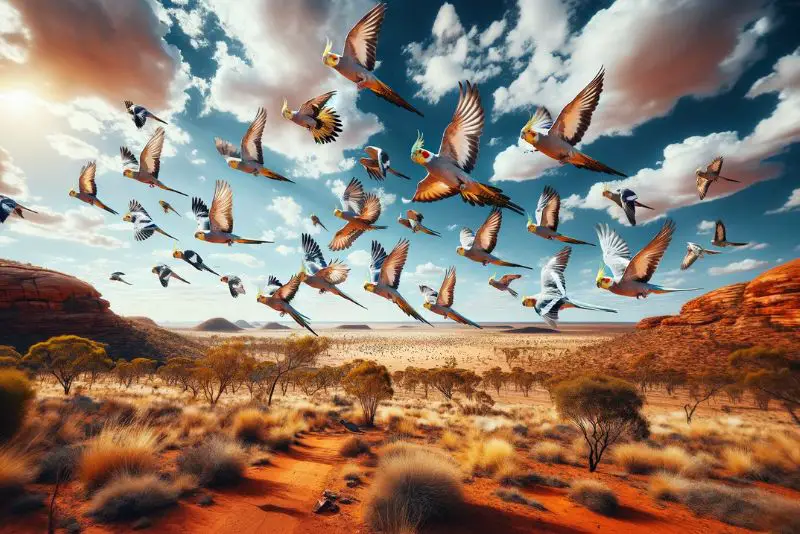
Cockatiels first caught the eye of Europeans in the late 18th century, but these birds had been thriving in the wild landscapes of Australia long before that.
Native to the Australian continent, cockatiels are predominantly found in the outback regions, where they have adapted superbly to the Australian bush and arid inland areas. These birds are natural survivors, thriving in environments that range from the dry interior to the tropical north.
In their natural habitat, cockatiels are highly social and nomadic, often seen in flocks. They are adept at finding water and food across vast, harsh landscapes, which contributes to their resilience.
The wild cockatiels’ plumage is predominantly grey with flashes of bright yellow and orange in the crest and cheeks, a coloration that provides excellent camouflage against the Australian bushland.
Their discovery by European explorers marked the beginning of the global fascination with these birds. Initially mistaken for a type of crested parrot, cockatiels were later classified correctly as part of the cockatoo family due to their shared characteristics, such as the erectile crest.
This early period of discovery set the stage for cockatiels to become one of the most cherished avian pets, leading to their eventual domestication and spread across the globe.
Domestication and Global Popularity
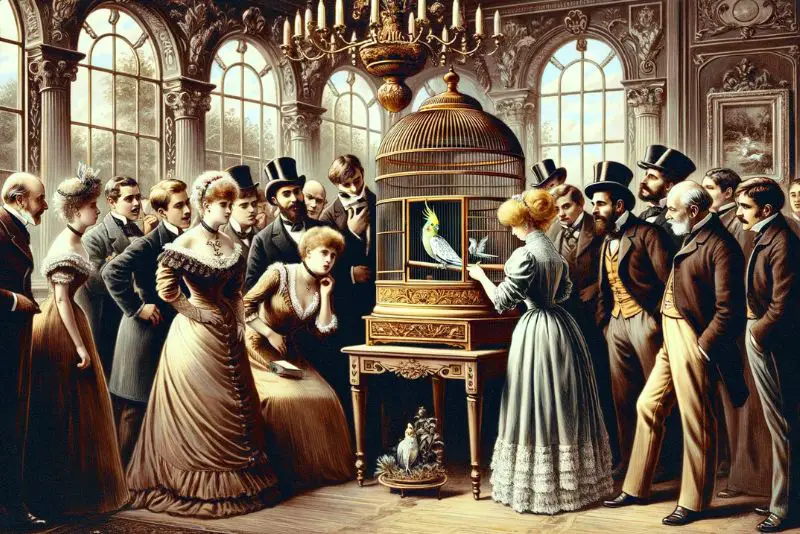
The journey from the wild outbacks of Australia to homes around the world is a fascinating aspect of the cockatiel’s history.
In the 19th century, these playful birds, known for their mimicry skills, made their way to Europe, immediately winning over bird lovers. Their debut in Europe happened around the mid-1800s, setting the stage for their worldwide popularity.
Although cockatiels were quite the luxury, adored by nobility and well-off bird collectors at first, as time went on and breeding practices evolved, these charming birds became more accessible to everyone. Countries like the United Kingdom, Germany, and later the United States saw a surge in cockatiel lovers.
What really helped cockatiels become a household name was how well they took to breeding in captivity. Unlike some exotic birds, they adapted wonderfully to living in aviaries and homes, showing off their resilience and versatility. Their affectionate nature and the ease with which they bonded with humans only added to their allure as family pets.
By the time the 20th century rolled around, cockatiels had secured their spot as one of the most beloved pet birds worldwide. This widespread love for them led to more dedicated breeding efforts, resulting in a delightful variety of color mutations and patterns – each as charming as the next.
Evolution of Types and Variations
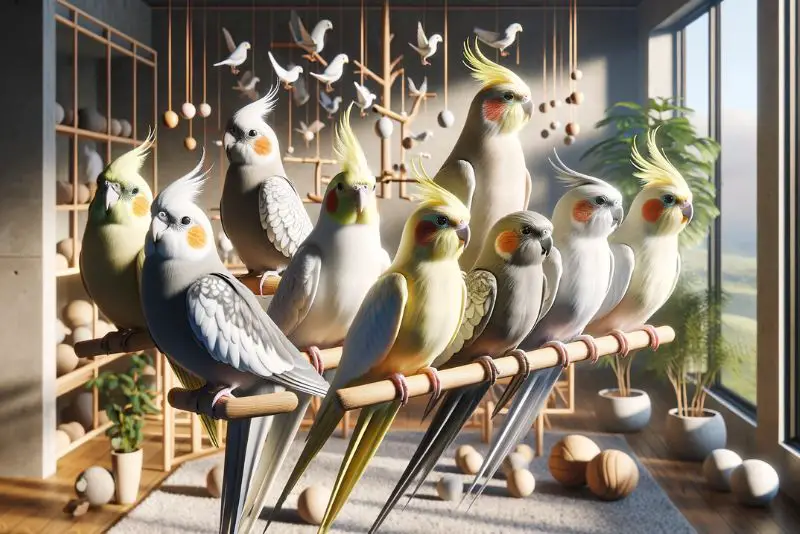
The breeding journey of cockatiels has been an incredible blend of artistry and science, leading to a stunning array of colors and patterns that go far beyond their original wild form.
The pied cockatiel, which appeared unexpectedly in captivity in the 1950s, marked a pivotal moment in the world of cockatiel breeding. This first mutation sparked a wave of interest in exploring new and diverse color variations.
Over time, breeders have worked with dedication and passion to bring out a variety of color patterns and mutations in cockatiels. Among these, some of the most eye-catching include the Lutino, with its vivid yellow feathers and striking red eyes, and the Pearl cockatiel, renowned for its dappled, pearl-like feather patterns.
Let’s talk about the Cinnamon cockatiel too – it’s a personal favorite with its warm, brownish-grey hue that offers a gentle variation from the standard grey.
The Albino cockatiel is another stunner, completely pigment-free, presenting an ethereal white beauty paired with red eyes. And then there’s the Silver mutation, adding a touch of elegance with its subtle grey tone and a hint of a metallic glimmer.
These beautiful variations do more than just enhance the cockatiel’s visual appeal; they have deepened our understanding of genetics in birds.
Each variation brings its own unique personality and charm, broadening their appeal to bird enthusiasts everywhere.
Cockatiels in Modern Times

Today, cockatiels still hold a special place in the hearts of bird lovers around the world.
Their popularity isn’t just because of their stunning colors and the diverse types we’ve come to adore, but also due to their friendly nature and the fact that they’re relatively easy to care for.
This makes them perfect companions not only for seasoned bird enthusiasts but also for those just starting their journey into bird ownership.
The pet industry continues to see a strong demand for cockatiels. This has led to a thriving market for everything a cockatiel needs, from cozy cages and entertaining toys to nutritious food and comprehensive health care products.
This demand has also fueled more research into the best ways to care for these birds, ensuring they have the best quality of life possible.
However, with their growing popularity as pets, I can’t help but think about the wild cockatiels back in Australia. They’re not endangered, but there’s increasing concern about the effects of habitat loss and climate change on their natural homes.
Bird enthusiasts and conservationists are coming together to advocate for the protection of these habitats, ensuring wild cockatiels continue to flourish.
We’re also seeing more efforts to educate future bird owners about what it really means to care for a cockatiel. It’s about understanding the commitment needed for their social, mental, and physical well-being, including regular vet visits.
These initiatives are crucial in making sure that cockatiels, whether in the wild or in our homes, lead happy and healthy lives.
Closing Thoughts On The Cockatiels Origin and History
The journey of the cockatiel from the Australian outback to homes around the world is a remarkable tale of adaptability and charm. We’ve uncovered the origins of these delightful birds, tracing their path from wild birds to cherished companions.
The evolution of different cockatiel types, from the pied to the lutino, is a captivating example of nature’s beauty enhanced by selective breeding.Today, these sociable birds have earned a special place in our hearts, bringing joy and companionship into our lives.
Let’s reflect on what we learned about on the history and evolution of cockatiels:
- We explored their early discovery in Australia and their adaptability to diverse environments.
- We witnessed their rise to global popularity as they transitioned from exotic birds to beloved pets.
- We got into the breeding history that led to the many stunning cockatiel variations we see today.
For those enchanted by these feathered Pikachu looking friends, the next natural step might be to learn more about them, their care and training. Understanding the needs of your cockatiel, from diet and health to mental stimulation, is crucial for their well-being. Whether you’re a seasoned cockatiel owner or considering welcoming one into your home, exploring the world of cockatiel care can deepen your bond with these fascinating birds and ensure they live a happy and healthy life.
For those enchanted by these feathered friends, the next natural step might be to learn more about their care and training. Understanding the needs of your cockatiel, from diet and health to mental stimulation, is crucial for their well-being.
Whether you’re a seasoned cockatiel owner or considering welcoming one into your home, exploring the world of cockatiel care can deepen your bond with these fascinating birds and ensure they live a happy and healthy life.
What fascinates you most about the journey of cockatiels from the wild Australian outback to becoming beloved pets around the world? Share your thoughts or personal experiences with these charming birds in the comments below!”
-Kacey
P.S. Did you like this article? Fly on over to:
Related Blog Posts On Cockatiels
- All About Cockatiel Birds: A Comprehensive Guide
- Cockatiel Lifespan in Captivity: Complete Guide
- Cockatiel Care 101: How to Keep Your Feathered Friend Thriving
- When Cockatiels Molt: Times of The Year and Seasons




